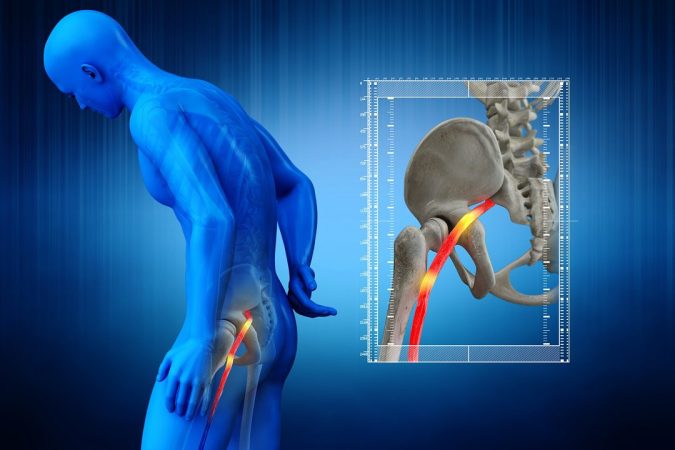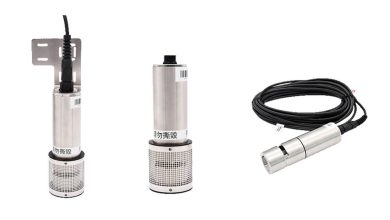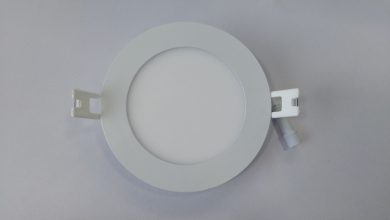Unlock Relief: Powerful Methods to Alleviate Sciatica Pain
Discover Effective Techniques for Reducing Sciatica Pain and Enhancing Well-being. Ease Your Discomfort and Reclaim Your Life!

Sciatica pain can be incredibly debilitating, affecting your daily activities and overall quality of life. It is characterized by pain that radiates along the path of the sciatic nerve, which runs from the lower back, through the hips and buttocks, down each leg. If you’re looking for effective ways to alleviate sciatica pain, you’ve come to the right place. In this article, we will explore powerful methods that can help unlock relief and restore comfort.
1. Understanding Sciatica
Sciatica is a condition that occurs when the sciatic nerve, the longest nerve in the body, becomes compressed or irritated. This compression can result from various factors such as a herniated disc, spinal stenosis, or muscle inflammation.
2. Common Causes of Sciatica Pain
Sciatica pain can be caused by several underlying conditions, including:
- Herniated or bulging discs
- Spinal stenosis
- Piriformis syndrome
- Degenerative disc disease
- Spondylolisthesis
3. Symptoms and Diagnosis
The most common symptom of sciatica is pain that radiates from the lower back, through the buttocks, and down the leg. Other symptoms may include tingling, numbness, or weakness in the affected leg or foot. A healthcare professional can diagnose sciatica through a physical examination and may order imaging tests like an MRI or X-ray for further evaluation.
4. Conservative Treatment Options
When it comes to managing sciatica pain, conservative treatment options are usually the first line of defense. These may include:
Physical Therapy
Physical therapy aims to strengthen the muscles supporting the spine, improve flexibility, and alleviate pain. It typically involves exercises, stretches, and manual therapy techniques tailored to the individual’s needs.
Medications
Nonsteroidal anti-inflammatory drugs (NSAIDs), such as ibuprofen, can help reduce inflammation and alleviate pain. In some cases, muscle relaxants or oral steroids may be prescribed for short-term relief.
Hot and Cold Therapy
Applying heat or cold to the affected area can help reduce inflammation and provide temporary pain relief. Heat therapy, such as using a heating pad, promotes blood circulation, while cold therapy, such as an ice pack, numbs the area and reduces swelling.
5. Exercise and Stretching for Sciatica Relief
Exercise and stretching can play a crucial role in relieving sciatica pain and preventing future episodes. However, it’s essential to choose low-impact activities and perform targeted stretches that specifically target the affected area.
Low-Impact Exercises
Engaging in activities like swimming, walking, or cycling can help strengthen the back and abdominal muscles without putting excessive strain on the spine. These exercises improve flexibility, enhance blood flow, and promote healing.
Targeted Stretches
Specific stretches can help alleviate sciatica pain by reducing muscle tightness and improving flexibility. Some effective stretches include the seated piriformis stretch, knee-to-chest stretch, and child’s pose.
6. Alternative Therapies
Apart from traditional treatment options, several alternative therapies can provide relief from sciatica pain. These therapies focus on holistic healing and include:
Acupuncture
Acupuncture involves the insertion of thin needles into specific points on the body to stimulate energy flow and alleviate pain. This ancient Chinese practice has been found effective in reducing sciatica pain and promoting overall well-being.
Chiropractic Care
Chiropractic care involves spinal adjustments and manipulations to restore proper alignment and alleviate nerve impingement. It can provide relief from sciatica pain by reducing pressure on the affected nerve.
Massage Therapy
Massage therapy can help relax muscles, improve blood circulation, and reduce pain and inflammation. Techniques such as deep tissue massage and Swedish massage can target the affected areas and provide relief.
7. Lifestyle Modifications for Sciatica Pain
Certain lifestyle modifications can complement other treatment methods and help manage sciatica pain effectively. Consider the following adjustments:
Maintaining Good Posture
Practicing good posture while sitting, standing, and lifting can reduce strain on the spine and alleviate sciatica pain. Using ergonomic chairs and supports can also provide additional comfort.
Ergonomic Adjustments
Making ergonomic adjustments in your workspace, such as adjusting the height of your desk and chair, can help maintain proper posture and reduce the risk of exacerbating sciatica pain.
Weight Management
Maintaining a healthy weight can alleviate stress on the spine and reduce pressure on the sciatic nerve. Regular exercise and a balanced diet can contribute to weight management.
Quitting Smoking
Smoking can contribute to disc degeneration and impede the body’s healing process. Quitting smoking can improve overall spinal health and reduce the risk of recurrent sciatica episodes.
8. Surgical Interventions
In severe cases of sciatica, when conservative treatments fail to provide relief, surgical interventions may be considered. Some common surgical options include:
Microdiscectomy
Microdiscectomy involves removing a portion of the herniated disc that is pressing on the sciatic nerve. It is a minimally invasive procedure that aims to relieve pressure and alleviate pain.
Lumbar Decompression Surgery
Lumbar decompression surgery, such as laminectomy or laminotomy, aims to create more space for the affected nerve by removing portions of bone or tissue. This procedure can alleviate pressure and provide relief from sciatica pain.
9. Preventive Measures for Future Episodes
To reduce the risk of future sciatica episodes, it’s crucial to adopt preventive measures and maintain a healthy lifestyle. Consider the following practices:
Regular Exercise Routine
Engage in regular exercise that focuses on strengthening the core muscles and improving flexibility. Exercises like yoga and Pilates can help maintain a healthy spine.
Core Strengthening Exercises
Strong core muscles provide stability and support to the spine, reducing the risk of sciatica pain. Planks, bridges, and abdominal exercises are effective for strengthening the core.
Mindful Movement Practices
Practicing mindful movement techniques such as yoga and tai chi can improve posture, balance, and overall well-being. These practices promote relaxation and reduce the risk of muscle imbalances.
Proper Lifting Techniques
Using proper lifting techniques, such as bending the knees and keeping the back straight, can minimize strain on the spine and prevent sciatica pain caused by lifting heavy objects.
10. Conclusion
Sciatica pain can be debilitating, but there are various methods to alleviate the discomfort and regain your quality of life. From conservative treatments like physical therapy and medications to alternative therapies like acupuncture and chiropractic care, finding the right approach for you is essential. Additionally, making lifestyle modifications, considering surgical options when necessary, and adopting preventive measures can help prevent future episodes of sciatica pain.








